Valorant isn’t just about crosshair placement, but about frames. Low FPS turns duels into dice rolls. Stutters throw off your spray. Input lag ruins your flick. We’ve tested every setting, every tweak, every myth.
This guide shows you exactly how to increase FPS in Valorant, focusing on the settings that actually boost performance, so your frames stop holding back your frags.
- Optimize in-game settings by lowering graphics quality, disabling unnecessary visual effects, and enabling performance features
- Adjust Windows settings with High Performance power plan, Game Mode, and virtual memory optimization
- Update drivers regularly, especially GPU drivers with game-ready optimizations
- Close background applications that consume CPU, GPU, and memory resources
- Optimize CPU and RAM performance by enabling XMP/DOCP profiles and adjusting thread priority
- Manage thermals to prevent performance throttling during extended play sessions
- Consider targeted hardware upgrades if your system doesn’t meet recommended specifications
Why FPS Matters in Valorant
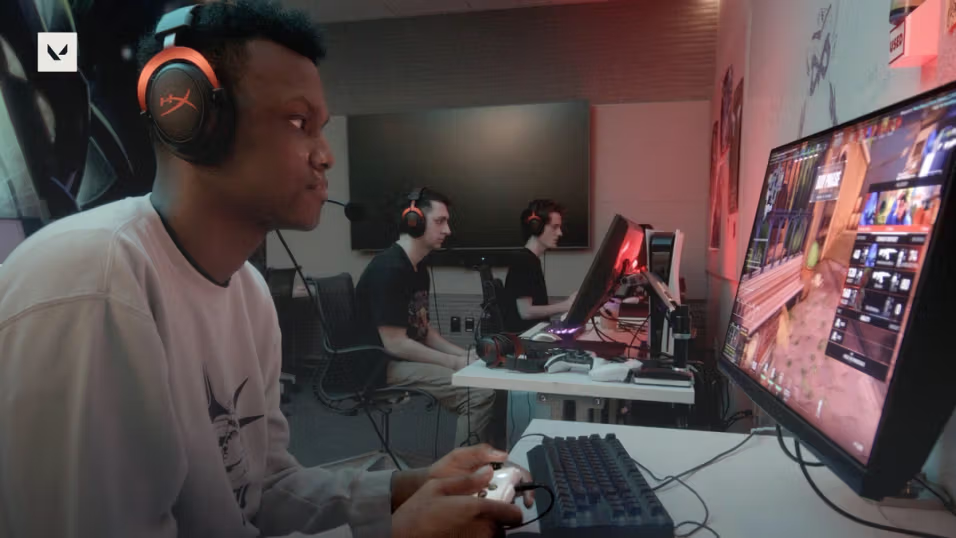
Before diving into optimization, it’s important to understand why frame rate is particularly crucial in Valorant compared to other games.
Higher FPS provides tangible benefits in competitive play that directly impact your performance.
- Reduced input lag means faster reaction time
- Smoother tracking of moving targets
- More consistent hit registration
- Better synchronization with server ticks
- Fewer micro-stutters during crucial moments
The technical advantages of higher FPS extend beyond just visual smoothness.
- More recent frame data sent to server
- Reduced system latency (even beyond monitor refresh rate)
- More consistent frame pacing
- Better utilization of high refresh rate monitors
- Less screen tearing during fast movements
Different levels of play benefit from different performance targets.
- 60 FPS: Minimum playable experience
- 144 FPS: Good competitive experience
- 240 FPS: Optimal competitive experience
- 360+ FPS: Professional-level responsiveness
- Consistent FPS better than higher but unstable FPS
Optimal In-Game Settings for Maximum FPS
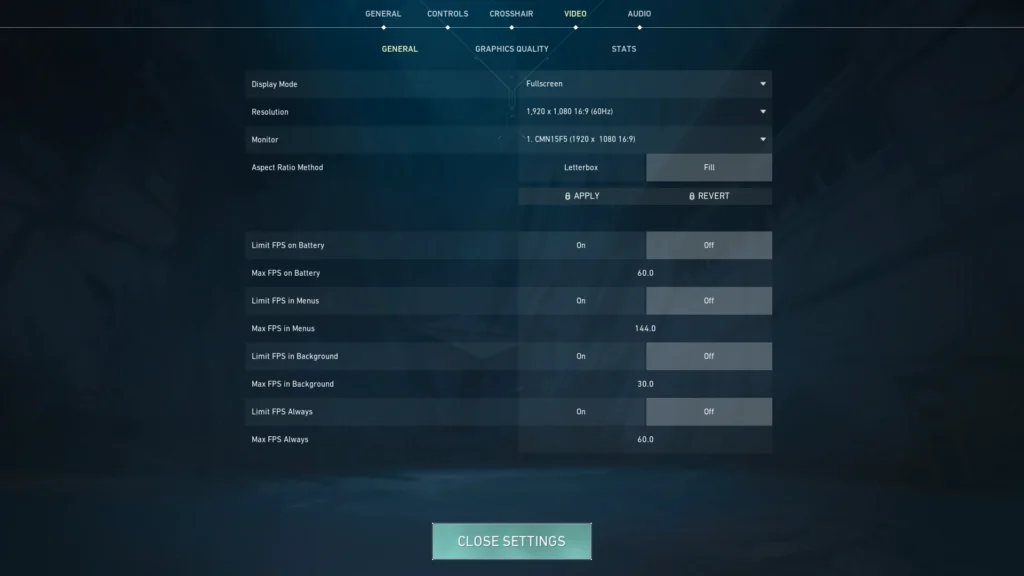
Valorant’s in-game settings provide numerous opportunities to boost performance. Here’s how to optimize each setting for the best balance of visibility and FPS.
| Setting | Recommended Value | Impact on FPS | Notes |
|---|---|---|---|
| Display Mode | Fullscreen | High | Provides exclusive GPU access and reduces input lag |
| Material Quality | Low | High | Controls texture detail – minimal visual impact on gameplay |
| Texture Quality | Low | Medium | Affects VRAM usage and texture clarity |
| Detail Quality | Low | Very High | Major FPS impact – controls model and environment details |
| UI Quality | Low | Low | Minimal impact but every frame counts |
| Vignette | Off | Low | Slight performance cost with no competitive benefit |
| VSync | Off | Very High | Adds significant input lag when enabled |
| Anti-Aliasing | None/FXAA | Medium | MSAA has significant performance cost |
| Anisotropic Filtering | 1x | Low | Affects texture clarity at angles |
| Improve Clarity | Off | Medium | Post-processing effect that reduces performance |
| Experimental Sharpening | Off | Low | Image processing that impacts performance |
| Bloom | Off | Low | Light effects that add visual noise and reduce FPS |
| Distortion | Off | Low | Visual effects during abilities |
| First Person Shadows | Off | Medium | Shadows on your character/weapons |
Pro Tip: Textures vs. Performance
If you have 4GB+ VRAM, you can safely set Texture Quality to Medium without significant FPS impact while maintaining better visual clarity. This helps with spotting enemies at distance, while keeping other settings low for maximum performance.
| Setting | Recommended Value | Impact | Notes |
|---|---|---|---|
| Multithreaded Rendering | On | Very High | Utilizes multiple CPU cores for significant performance boost |
| Network Buffering | Minimum | Medium | Reduces input lag on stable connections |
| Anti-Aliasing Quality | None | Medium | Every bit of performance matters |
| NVIDIA Reflex Low Latency | On + Boost | High | Reduces system latency without FPS cost (NVIDIA GPUs only) |
| Limit FPS | Off | Variable | Uncapped for minimum input lag |
| Raw Input Buffer | On | Medium | More consistent mouse input |
| Resolution | Native (or lower) | Very High | Lower resolution drastically improves FPS |
Multithreaded Rendering is one of the most impactful settings for FPS in Valorant. Here’s what you need to know:
- How it works: Distributes rendering workload across multiple CPU cores instead of relying primarily on a single core
- Performance gain: Typically 20-50% FPS increase on multi-core CPUs (4+ cores)
- Best for: Modern CPUs with 4 or more cores
- Potential downsides: Can cause stuttering on some older systems or with specific hardware combinations
- Testing method: If you experience stutters with it enabled, try disabling to see if performance becomes more consistent
For the vast majority of systems, this should be enabled for maximum performance.
Resolution has the single biggest impact on performance. Lower resolutions dramatically increase FPS but reduce clarity.
| Resolution | Performance Impact | Visual Quality | Recommendation |
|---|---|---|---|
| Native (e.g., 1920×1080) | Baseline | Excellent | Default choice for balanced systems |
| 1728×1080 (90%) | +10-15% FPS | Good | Minor visual downgrade for noticeable performance |
| 1600×900 | +20-30% FPS | Acceptable | Good compromise for mid-range systems |
| 1280×720 | +40-60% FPS | Poor | For low-end systems only |
Many professional players use non-standard aspect ratios for performance benefits:
- 4:3 stretched (e.g., 1440×1080): Makes player models appear wider and easier to hit while boosting FPS
- 5:4 stretched (e.g., 1350×1080): Even wider models but more significant FOV reduction
- 16:10 (e.g., 1728×1080): Slight performance boost with minimal FOV impact
To use these aspect ratios, you’ll need to set a custom resolution in your GPU control panel first, then select it in Valorant.
If you prefer to keep your native resolution for UI clarity but need performance, Resolution Scale is your best option:
- Found in Video Settings > Graphics Quality
- 100% = Native resolution rendering
- Each 10% reduction provides roughly 5-10% FPS improvement
- Recommended minimum is 80% for balanced performance/quality
This setting renders the 3D elements at a lower resolution while keeping UI and text sharp at your native resolution.
- High-quality textures and effects
- Multithreaded rendering disabled
- Anti-aliasing set to MSAA 4x
- Bloom and distortion enabled
- VSync enabled to reduce tearing
- FPS limited to monitor refresh rate
- Low-quality textures and effects
- Multithreaded rendering enabled
- Anti-aliasing disabled or set to FXAA
- All visual effects disabled
- VSync disabled for lower latency
- FPS uncapped for minimum input lag
Windows Optimization for Maximum Performance
Beyond in-game settings, your Windows configuration significantly impacts Valorant’s performance. These system-level tweaks will ensure your PC is fully optimized for gaming.
Windows power plans control how much power your CPU and other components can use, directly affecting performance.
- Right-click the battery/power icon in the system tray → Power Options
- Select “High Performance” plan (or create one if not available)
- Click “Change plan settings” → “Change advanced power settings”
- Expand “Processor power management”
- Set “Minimum processor state” to 100%
- Set “Maximum processor state” to 100%
- Set “System cooling policy” to “Active”
- Click Apply and OK
For advanced users, you can try Hone’s own power plan, or unlock the hidden “Ultimate Performance” plan by running this command in an administrator Command Prompt:
powercfg -duplicatescheme e9a42b02-d5df-448d-aa00-03f14749eb61
Windows has built-in gaming optimizations that should be configured properly:
- Open Windows Settings → Gaming
- Enable “Game Mode”
- Under “Xbox Game Bar,” disable it to prevent overlay-related performance impacts
- Under “Captures,” disable “Record in the background while I’m playing a game”
- Under “Graphics Settings,” select “Hardware-accelerated GPU scheduling” (if available)
- Add Valorant to the list of games and set graphics preference to “High performance”
Windows virtual memory (pagefile) can cause stutters if not properly configured:
- Right-click on “This PC” or “My Computer” → Properties
- Select “Advanced system settings” → “Performance” → Settings
- Go to “Advanced” tab → “Virtual memory” → Change
- Uncheck “Automatically manage paging file size for all drives”
- Select your fastest drive (preferably an SSD)
- Select “Custom size”
- Set both Initial and Maximum size to the same value
- Recommended size: 1.5× your physical RAM (e.g., 24576 MB for 16GB RAM)
- Click “Set” then “OK” to apply
- Restart your computer
Several Windows services and background processes can be safely disabled for better gaming performance:
| Service/Process | Action | Benefit |
|---|---|---|
| Windows Search | Set to Manual | Reduces CPU usage from background indexing |
| Sysmain (SuperFetch) | Disable | Prevents RAM caching that can cause stutters |
| OneDrive | Close/Disable | Reduces background sync and CPU usage |
| Windows Update | Pause during gaming | Prevents updates and scanning during gameplay |
| Startup Applications | Disable unnecessary ones | Reduces RAM usage and background CPU load |
To disable startup apps:
- Press Ctrl+Shift+Esc to open Task Manager
- Go to “Startup” tab
- Disable all non-essential programs
To manage services:
- Press Win+R, type “services.msc” and hit Enter
- Find the service, right-click, select “Properties”
- Change “Startup type” as recommended
Graphics drivers have a massive impact on game performance:
- NVIDIA Users:
- Download latest Game Ready drivers from NVIDIA’s website
- Choose “Custom Installation” and check “Perform Clean Installation”
- After installation, open NVIDIA Control Panel
- Go to “Manage 3D Settings” → “Program Settings”
- Add Valorant and configure these settings:
- Power Management Mode: Prefer Maximum Performance (will consume more power)
- Texture Filtering Quality: Performance
- Preferred Refresh Rate: Highest Available
- Threaded Optimization: On
- Vertical Sync: Off
- AMD Users:
- Download latest drivers from AMD’s website
- Choose “Factory Reset” during installation
- After installation, open AMD Radeon Software
- Go to “Gaming” → “Valorant” (or add it if not listed)
- Configure these settings:
- Anti-Lag: Enabled
- Radeon Chill: Disabled
- Radeon Boost: Disabled
- Image Sharpening: Disabled
- Texture Filtering Quality: Performance
Hardware Considerations for Valorant FPS
While software optimizations can significantly improve performance, your hardware fundamentally limits what’s possible. Here’s what you need to know about Valorant’s hardware requirements and which upgrades provide the best value.
Valorant’s engine prioritizes certain components differently than most modern games. Understanding this helps target upgrades efficiently.
- CPU matters most – Valorant is heavily CPU-bound, particularly single-core performance
- RAM speed affects CPU performance – 3200MHz+ DDR4 provides noticeable benefits
- Storage affects load times but has minimal impact on in-game FPS
- GPU requirements are modest compared to other modern games
- CPU cooling prevents thermal throttling during extended sessions
- Monitor refresh rate determines visible FPS – 144Hz+ recommended
Memory speed and configuration can significantly impact Valorant performance, especially with Ryzen CPUs.
- Enable XMP/DOCP profile in BIOS to run RAM at rated speeds
- Use dual-channel configuration (2 sticks instead of 1) for up to 20% better performance
- 16GB is ideal for Valorant with background applications
- 3200MHz+ speed provides tangible FPS improvements
- Close memory-heavy background applications (browsers, Discord, etc.)
- Use memory cleaner utilities before extended gaming sessions
Preventing thermal throttling is crucial for maintaining consistent FPS in Valorant, especially during long gaming sessions.
- Monitor CPU and GPU temperatures (ideally below 80°C under load)
- Clean dust from components regularly with compressed air
- Replace thermal paste on CPU if temperatures are high
- Ensure proper case airflow with positive pressure configuration
- Use monitoring software like HWiNFO or MSI Afterburner
- Consider better cooling solutions if temperatures consistently exceed 85°C
| Target FPS | CPU | GPU | RAM | Storage |
|---|---|---|---|---|
| 60 FPS (Entry-Level) | Intel i3-10100 / Ryzen 3 3300X | GTX 1050 / RX 560 | 8GB DDR4-2666 | Any SSD |
| 144 FPS (Competitive) | Intel i5-10400 / Ryzen 5 3600 | GTX 1650 / RX 5500 XT | 16GB DDR4-3200 | NVME SSD |
| 240 FPS (High-End) | Intel i5-12600K / Ryzen 5 5600X | GTX 1660 Super / RTX 3060 | 16GB DDR4-3600 | NVME SSD Gen3 |
| 360+ FPS (Professional) | Intel i7-12700K / Ryzen 7 5800X3D | RTX 3060 Ti / RX 6700 XT | 32GB DDR4-3600 | NVME SSD Gen4 |
Note: CPU single-core performance is far more important than core count for Valorant. A 6-core CPU with higher single-core performance will outperform an 8-core CPU with lower single-core speeds.
Pro Tip: Best Value Upgrades
If you’re on a budget, these upgrades provide the best FPS-per-dollar for Valorant:
- RAM upgrade from single-channel to dual-channel (20-30% improvement)
- CPU cooler upgrade to prevent thermal throttling (10-20% improvement in sustained performance)
- XMP/DOCP enablement in BIOS (free 5-15% performance boost)
- SSD installation for smoother gameplay and faster loading (minimal FPS impact but better overall experience)
- CPU upgrade to newer generation with better single-core performance (30-50% improvement)
GPU upgrades should be your last priority for Valorant specifically unless you’re using integrated graphics or an extremely outdated card.
FPS Boosting Software and Tools
Several specialized tools can help you optimize Valorant performance beyond basic settings. Here are the most effective options for boosting FPS and maintaining optimal system performance.
Process Lasso automatically manages CPU priorities and affinity for optimal gaming performance:
- Download from Bitsum’s website
- Configure it to set Valorant to High Priority automatically
- Enable ProBalance feature to prevent background processes from interfering
- Configure CPU core assignment (especially beneficial for CPUs with 8+ cores)
- Watch a video on how to set up Process Lasso correctly
This tool is particularly useful for systems that run multiple background applications or have many CPU cores.
ISLC helps prevent the “standby memory” issue in Windows that can cause stutters during long gaming sessions:
- Download from Wagnardsoft
- Configure to clear standby memory when it reaches 1024 MB
- Set timer resolution to 0.5ms for smoother frame timing
- Run in the background while playing Valorant
This tool is highly recommended for systems with 16GB or less RAM, as it prevents Windows memory management from causing stutters.
MSI Afterburner provides essential performance monitoring and GPU optimization:
- Download from MSI’s website
- Use RivaTuner Statistics Server (included) for monitoring FPS, temperatures, and usage
- Create custom fan curves to maintain optimal GPU temperatures
- Apply modest GPU overclocks for additional performance (if temperatures permit)
- Monitor for thermal throttling during extended play sessions
The monitoring capabilities alone make this tool invaluable for diagnosing performance issues.
Windows default timer resolution can cause micro-stutters. These tools fix that:
- TimerResolution: Simple tool to set Windows timer resolution to 0.5ms
- ISLC: Includes timer resolution setting alongside memory management
- Process Lasso Pro: Includes TimerResolution technology
Lowering timer resolution improves frame timing and reduces input lag, making gameplay feel smoother even at the same FPS.
LatencyMon helps identify drivers and processes causing system latency that affects game performance:
- Download from Resplendence Software
- Run before and during Valorant gameplay
- Identify drivers with high DPC latency
- Update or replace problematic drivers
- Use results to optimize system configuration
This diagnostic tool is particularly useful for troubleshooting stuttering issues that aren’t resolved by common fixes.
Discover how Hone.gg can help you optimize your PC for maximum performance in Valorant and other competitive games.
Our advanced optimization tools automatically apply all the tweaks in this guide and more, continuously monitoring your system for peak gaming performance.
Troubleshooting Common FPS Issues
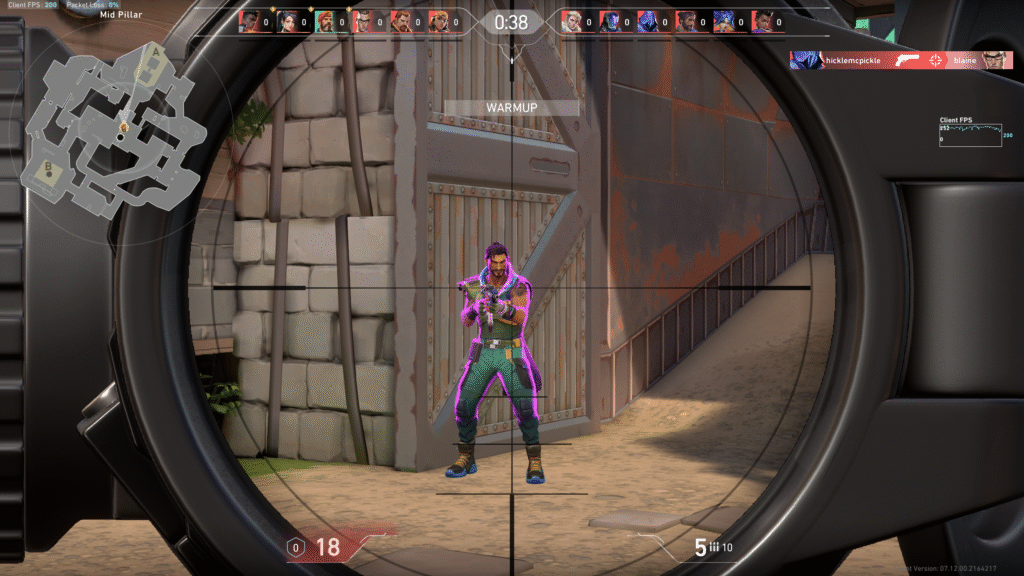
Even after applying all optimizations, you might encounter specific FPS issues in Valorant. Here’s how to diagnose and fix the most common problems.
Many players experience FPS drops specifically during combat encounters, when performance matters most.
- Lower your “Enemy Highlight Color” setting – complex shader processing
- Disable “Show Blood” in the General settings
- Set “Material Quality” and “Effects Detail” to Low
- Turn off “Improve Clarity” – heavy post-processing effect
- Update your shader cache in GPU control panels
- Increase CPU priority for Valorant in Task Manager
Performance gradually decreases during extended play sessions, often due to memory and thermal issues.
- Use a memory cleaner like ISLC to clear the standby list before you start playing
- Monitor temperatures to identify thermal throttling
- Improve system cooling with better airflow or coolers
- Close and restart Valorant every few hours during extended sessions
- Get more RAM if your system has less than 16GB in total
- Close background applications that might leak memory
- Verify game files through the Riot client
Sometimes the FPS counter shows high numbers, but gameplay still feels stuttery and inconsistent.
- Enable MSI Afterburner’s frametime graph to check for spikes
- Limit FPS to 95% of your average for more consistent frame pacing
- Check for background processes causing CPU spikes
- Use LatencyMon to identify drivers causing DPC latency
- Verify your storage health – fragmented or failing drives cause stutters
Game or Windows updates can sometimes introduce performance regressions.
- Check Valorant subreddit to see if others are experiencing issues
- Verify game files through the Riot client
- Reinstate optimization settings that may have been reset
- Roll back GPU drivers if performance decreased after driver update
- Update GPU drivers if performance decreased after game update
- Temporarily disable Windows Game Mode to test performance
- Consider clean reinstall of Valorant in extreme cases
@echo off echo FPS Diagnostic Tool for Valorant echo =============================== echo. echo Checking system specifications... systeminfo | findstr /c:"Total Physical Memory" /c:"System Manufacturer" /c:"System Model" /c:"Processor" /c:"BIOS Version" wmic path win32_VideoController get Name, CurrentHorizontalResolution, CurrentVerticalResolution, CurrentRefreshRate echo. echo Checking important Windows services... sc query "Audiosrv" | findstr /i "STATE" sc query "gupdate" | findstr /i "STATE" sc query "SysMain" | findstr /i "STATE" sc query "WSearch" | findstr /i "STATE" echo. echo Checking power plan settings... powercfg /getactivescheme echo. echo Checking for high CPU usage processes... wmic process get name, processid, priority, WorkingSetSize /format:list | findstr /i "name processid priority workingsetsize" | sort echo. echo Checking disk health... wmic diskdrive get Status, Model, MediaType echo. echo Checking NVIDIA driver settings (if applicable)... reg query "HKCU\Software\NVIDIA Corporation\Global\NVTweak\Devices\509901423-0\Color" /v "NvCplUseColorCorrection" 2>nul reg query "HKLM\SYSTEM\CurrentControlSet\Control\GraphicsDrivers" /v "HwSchMode" 2>nul echo. echo Checking DirectX diagnostic information... dxdiag /t dxdiag_output.txt echo DirectX info saved to dxdiag_output.txt in current directory echo. echo Checking for potential network issues that might affect FPS display... ping 8.8.8.8 -n 10 | findstr /i "Minimum Maximum Average" echo. echo Diagnostic complete! Please check the output for potential FPS-limiting issues. echo Consider running monitoring software like MSI Afterburner while playing to identify bottlenecks. echo. pause
Pro Player Configurations
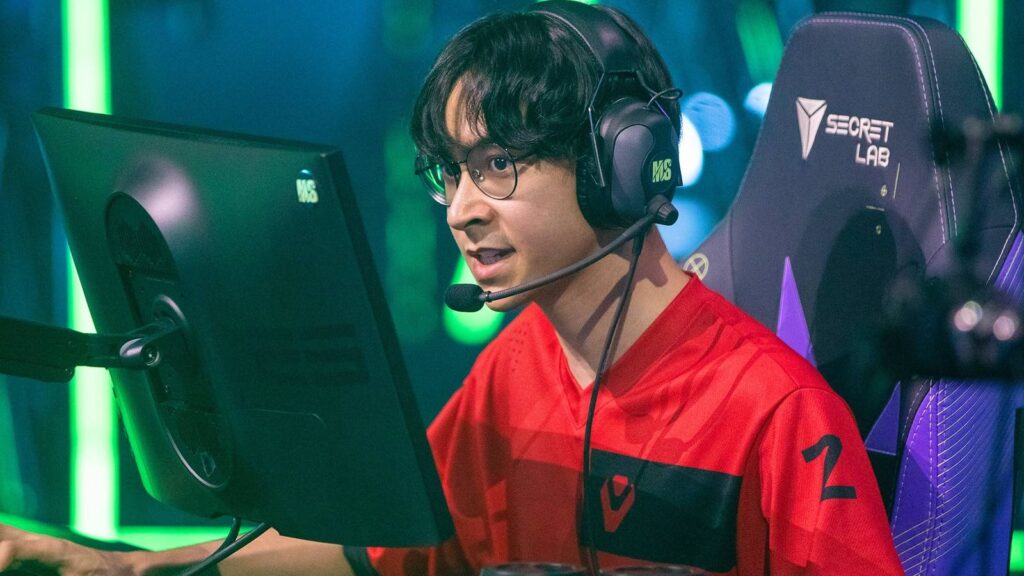
Professional Valorant players optimize their settings for maximum competitive advantage. Let’s examine some common patterns and configurations from top players that you can adapt to your own setup.
Despite individual preferences, most professional Valorant players share these configuration approaches:
| Setting Category | Common Configuration | Reasoning |
|---|---|---|
| Resolution | Native or 4:3 Stretched | Balance between visibility and performance; stretched aspect ratio makes player models wider and easier to hit |
| Graphics Quality | Nearly All Low/Off | Maximum performance and visibility; reduced visual clutter |
| FPS Limit | Uncapped | Minimum input lag; even FPS beyond monitor refresh rate reduces system latency |
| Multithreaded Rendering | Enabled | Better utilization of modern CPUs for higher framerates |
| NVIDIA Reflex | On + Boost | Reduced system latency without performance cost |
| Anti-Aliasing | MSAA 2x or FXAA | Minimal performance impact while reducing distracting jagged edges |
| Texture Quality | Medium | The one setting some pros keep higher for better visibility at distance |
Known for high-precision aim and aggressive playstyle, TenZ prioritizes smooth performance.
- Resolution: 1920×1080 (Native)
- All Graphics Settings: Low
- Anti-Aliasing: MSAA 2x
- Anisotropic Filtering: 2x
- Multithreaded Rendering: On
- Material Quality: Low
- Texture Quality: Low
- Detail Quality: Low
- NVIDIA Reflex: On + Boost
- Bloom, Distortion, Cast Shadows: All Off
Former CS:GO pro known for precise headshots, ScreaM uses settings for maximum visibility.
- Resolution: 1920×1080 (Native)
- All Graphics Settings: Low
- Anti-Aliasing: MSAA 4x
- Anisotropic Filtering: 2x
- Multithreaded Rendering: On
- Material Quality: Low
- Texture Quality: Medium
- Detail Quality: Low
- NVIDIA Reflex: On + Boost
- UI Quality: Low
Famous for his aim and game sense, Shroud uses settings that balance performance and visuals.
- Resolution: 1920×1080 (Native)
- Display Mode: Fullscreen
- Anti-Aliasing: MSAA 4x
- Anisotropic Filtering: 4x
- Multithreaded Rendering: On
- Material Quality: Medium
- Texture Quality: High
- Detail Quality: Low
- Vignette: Off
- VSync: Off
Most professional Valorant players use high-end systems with these specifications:
- CPU: Latest Intel Core i9 or AMD Ryzen 9 processors (emphasis on single-core performance)
- GPU: RTX 3070/3080 or better (often sponsored)
- RAM: 32GB DDR4-3600+ in dual-channel configuration
- Storage: NVMe SSD with 1TB+ capacity
- Monitors: 240Hz or 360Hz 1080p displays with 1ms response time
- Power Supply: 850W+ gold or platinum rated
- CPU Cooling: High-end air cooling or 240mm+ AIO liquid cooling
- Case Airflow: Premium cases with optimal airflow design
While these specs exceed what’s needed for Valorant, pros need absolute consistency and maximum performance in all scenarios.
You can achieve pro-level performance in Valorant without breaking the bank:
| Component | Budget Option (~$800 total) | Mid-Range Option (~$1200 total) |
|---|---|---|
| CPU | Intel i5-12400F / Ryzen 5 5600 | Intel i5-12600K / Ryzen 7 5800X |
| GPU | GTX 1660 Super / RX 6600 | RTX 3060 / RX 6650 XT |
| RAM | 16GB DDR4-3200 (2x8GB) | 16GB DDR4-3600 (2x8GB) |
| Storage | 500GB NVMe SSD | 1TB NVMe SSD |
| Monitor | 144Hz 1080p IPS | 240Hz 1080p IPS |
| CPU Cooling | Stock / Budget Air Cooler | Quality Tower Air Cooler |
Either of these builds will provide excellent Valorant performance at competitive settings. The key factors are CPU single-core performance, dual-channel RAM, and a high refresh rate monitor.
Conclusion: Maintaining Optimal Performance
Achieving and maintaining high FPS in Valorant requires a combination of proper settings, system optimizations, and good maintenance habits. By following the recommendations in this guide, you should see significant performance improvements regardless of your hardware.
Establish a regular maintenance routine to keep your system performing optimally:
- Weekly: Clear temporary files, restart your PC, check for driver updates
- Monthly: Clean dust from external vents, update GPU drivers, check background applications
- Quarterly: Clean internal components, reapply performance tweaks that might have been reset by updates
Regular maintenance prevents performance degradation over time and ensures your optimizations remain effective.
Keep track of your performance to quickly identify and address any issues:
- Use built-in FPS counter or external tools like MSI Afterburner to monitor performance
- Record baseline performance after optimization to compare against future measurements
- Check performance after game updates, as they can sometimes introduce regressions
- Pay attention to system temperatures during extended play sessions
Monitoring helps you catch problems early before they significantly impact your gameplay.
The most effective optimization methods evolve as the game and hardware change:
- Follow pro players to see how they adjust their settings
- Check the Valorant subreddit for community-discovered optimizations
- Review patch notes for performance-related changes
- Test new drivers and settings after major game or Windows updates
What works best today might not be optimal tomorrow, so staying informed helps you maintain peak performance.
Pro Tip: The Pre-Game Ritual
Many professional players follow a specific routine before competing to ensure optimal performance:
- Restart PC completely before starting a gaming session
- Close all unnecessary background applications
- Clear standby memory with ISLC or similar tool
- Set Valorant.exe to high priority
- Ensure all power-saving features are disabled
- Spend 5 minutes in the practice range to warm up and let shaders load
- Check FPS and temperatures before queuing for competitive matches
This ritual ensures your system is in optimal condition before you play and helps prevent first-game performance issues.
Remember that consistency is often more important than raw numbers. A stable 144 FPS provides a better competitive experience than FPS that fluctuates between 200-300, causing inconsistent frame times. Focus on stability first, then work on increasing your baseline performance.
By implementing the optimizations in this guide, you’ll not only improve your FPS but also reduce input lag and system latency, giving you every possible competitive advantage in Valorant’s fast-paced tactical gameplay.
Frequently Asked Questions
Does high FPS matter if my monitor is only 60Hz?
Yes, higher FPS reduces system latency and input lag, even on a 60Hz monitor. While your display won’t show extra frames, higher FPS means your system processes game data more frequently, resulting in better responsiveness. For a true advantage, pair high FPS with a high-refresh monitor.
Why does my FPS drop during gunfights?
FPS drops often stem from particles, shaders, lighting, and CPU spikes during intense scenes. Lower graphics settings, disable “Show Blood” and “Improve Clarity,” enable Multithreaded Rendering, close background apps, and update GPU drivers to help stabilize performance.
Is it better to cap FPS or leave it uncapped?
Uncapped FPS gives the lowest input lag. However, capping FPS slightly below your average or monitor refresh can stabilize frame pacing. For G-Sync/FreeSync, combine it with V-Sync and NVIDIA Reflex or AMD Anti-Lag for low latency. Most pros prefer uncapped FPS for maximum responsiveness.
Does Valorant run better on Intel or AMD CPUs?
Valorant favors strong single-core performance, historically giving Intel a slight edge. However, AMD’s Ryzen 5000+ series have closed the gap. Both can deliver high FPS; prioritize newer CPUs with strong single-core metrics.
How much RAM do I need for maximum Valorant performance?
16GB dual-channel RAM (2x8GB) at 3200MHz+ is ideal. 8GB works but may cause stutters with background apps. Dual-channel improves performance by up to 20% over single-channel.
Should I use NVIDIA Reflex in Valorant?
Yes. NVIDIA Reflex (“On” or “On + Boost”) reduces system latency by syncing CPU and GPU render queues. “On + Boost” may lower input lag further but can increase thermal load. Most players benefit from using “On” for a balance of responsiveness and performance.
How do I fix stuttering even though I have high FPS?
Use a frametime graph to spot spikes. Optimize your Windows and game settings, then check for background CPU load. Cap FPS 3-5 below refresh for smoother pacing, or use G-Sync/FreeSync + V-Sync + Reflex or AMD Anti-Lag for even better results. Tools like ISLC help clear Windows standby memory, which may also reduce stutters.
What CPU/GPU upgrade would give me the biggest FPS boost?
Valorant is CPU-bound at competitive settings. Upgrading to a newer CPU with strong single-core performance will yield bigger FPS gains than a GPU upgrade. For older or entry-level GPUs (below GTX 1050 Ti), a GPU upgrade also helps. Enable XMP/DOCP for RAM and optimize Windows before hardware upgrades.
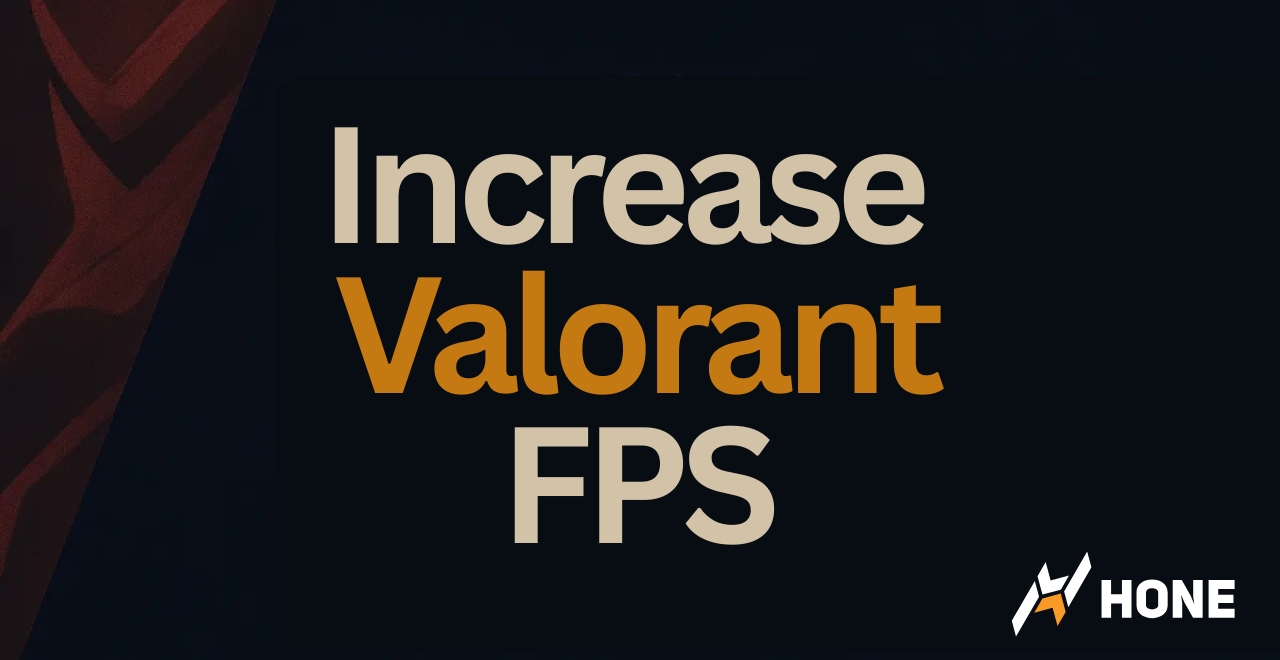

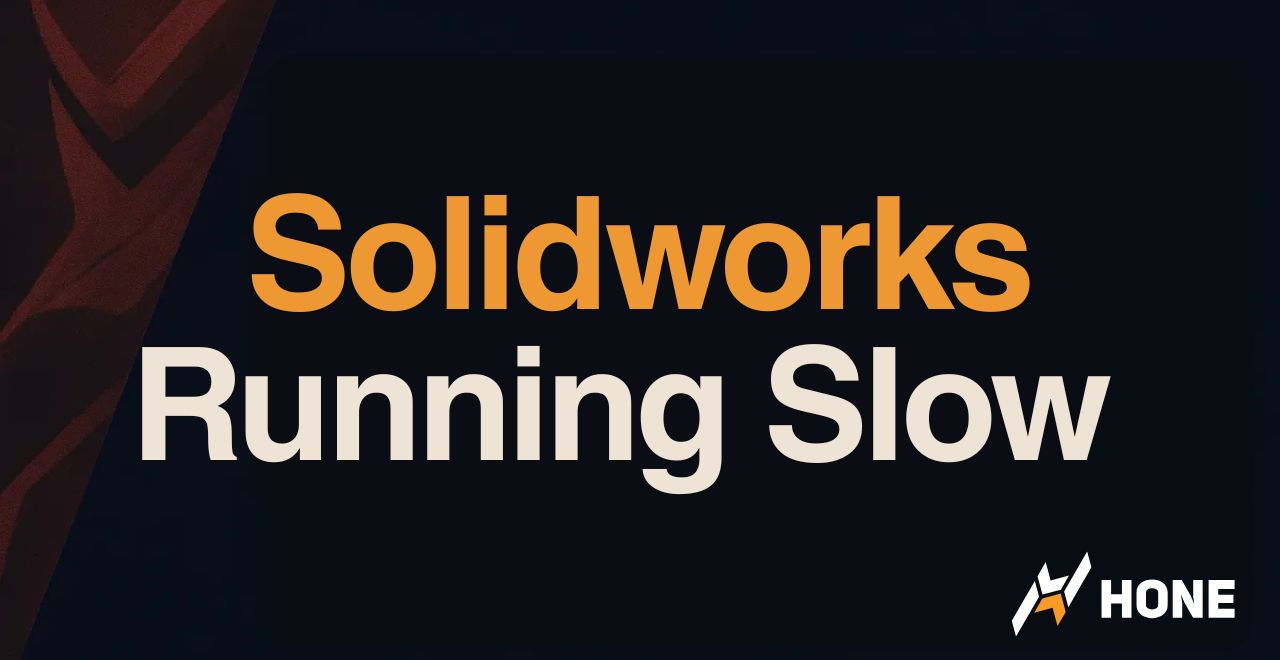



 Discord
Discord
 Instagram
Instagram
 Youtube
Youtube
 TikTok
TikTok